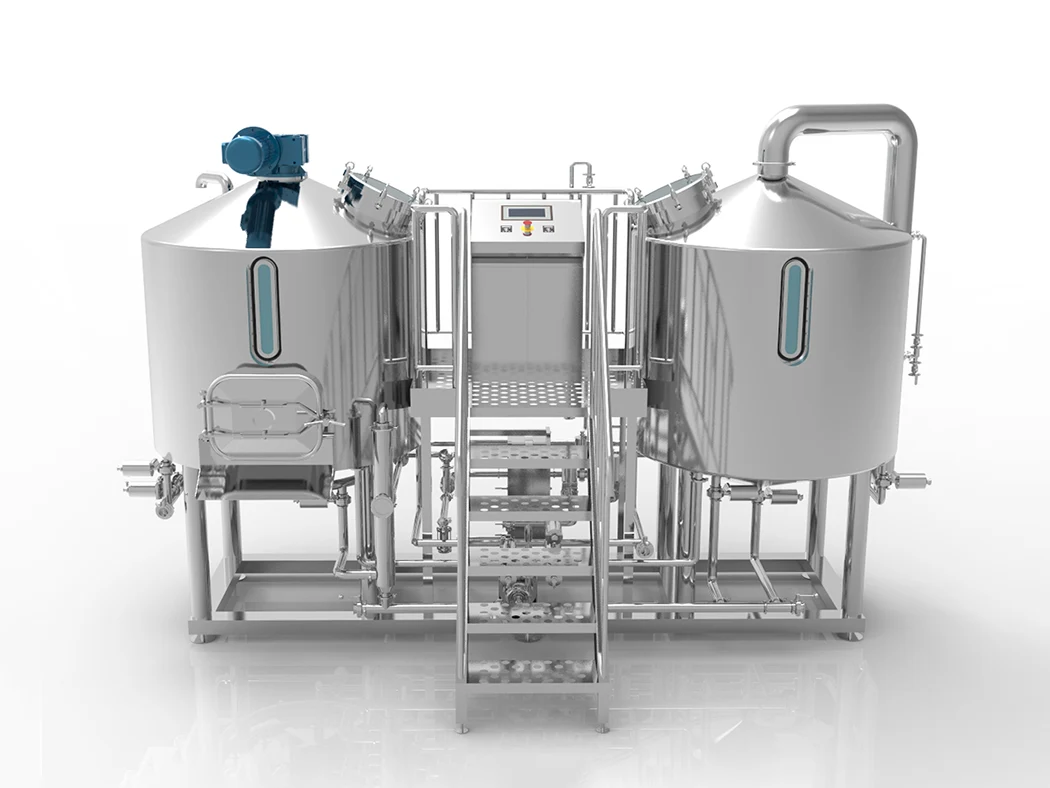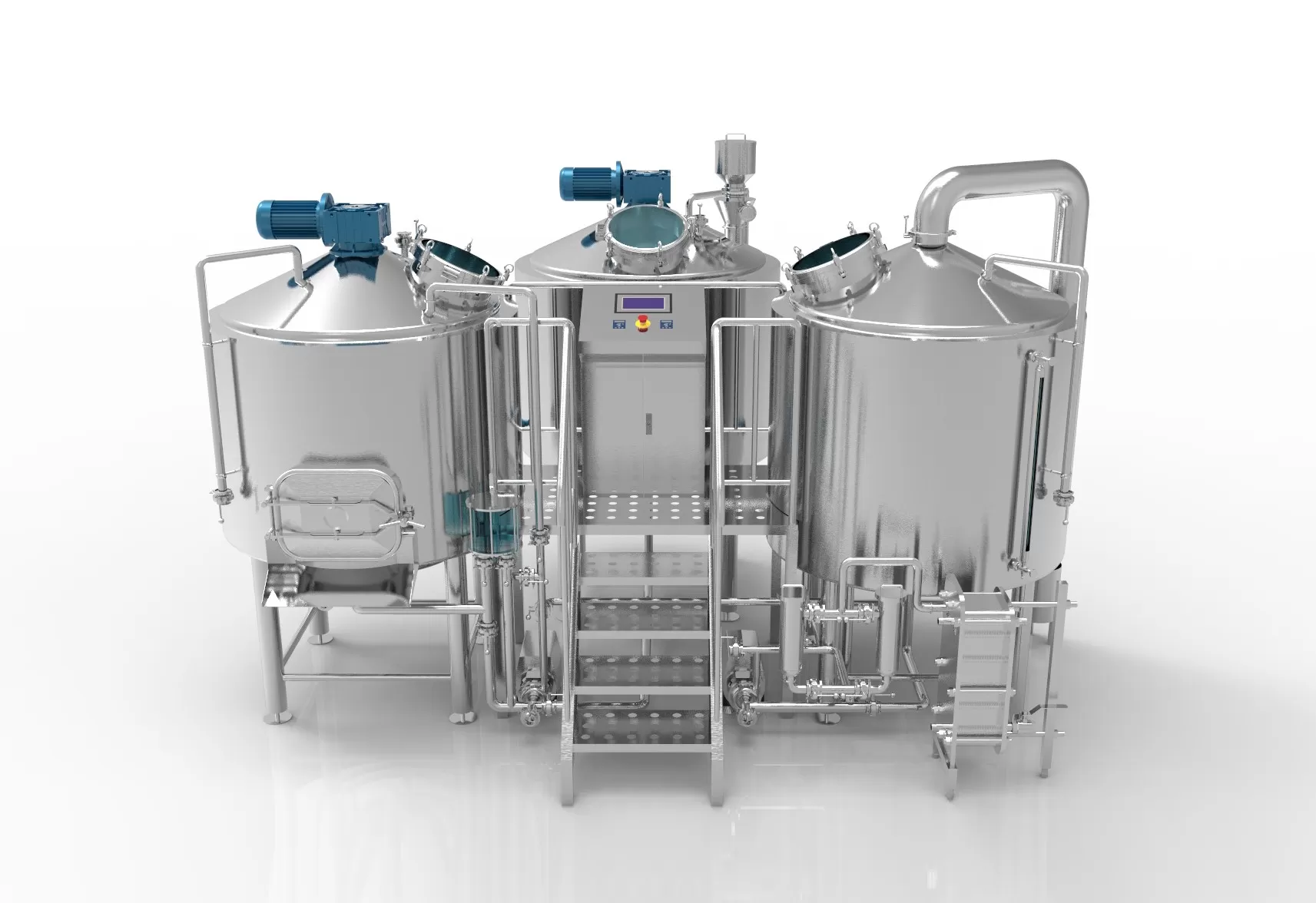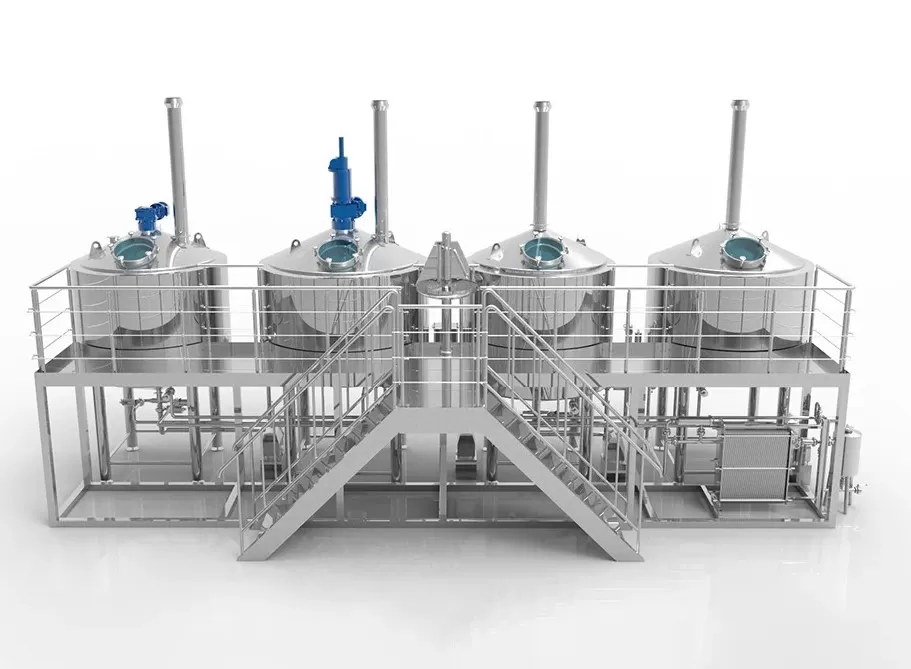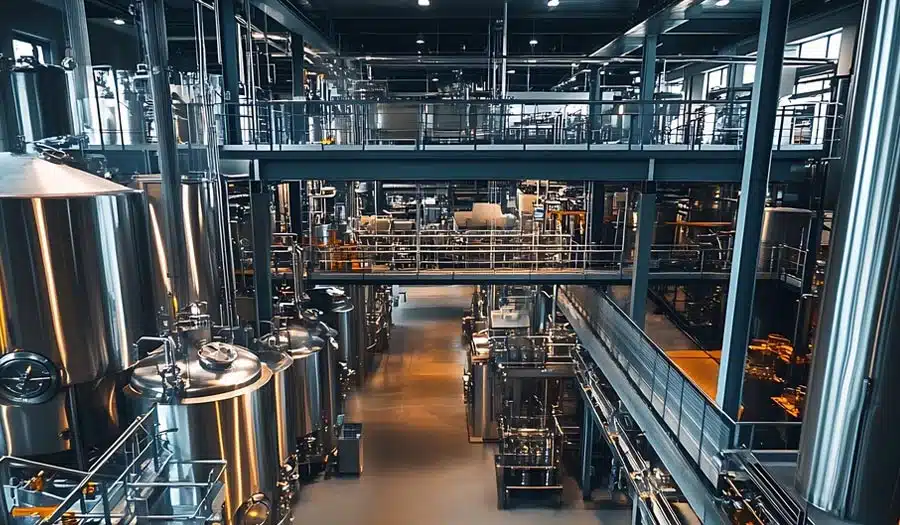Beer fermentation tanks are crucial equipment in the beer production process, and their service life directly affects production costs, beer quality, and factory operating efficiency. However, due to long-term contact with beer yeast, carbon dioxide, detergents, and other chemicals, fermentation tanks are susceptible to corrosion, contamination, and wear. In order to extend their service life, scientific and reasonable maintenance measures must be taken to ensure the good operating condition of the equipment. Micet engineers will introduce in detail the tips to extend the service life of beer fermentation tanks from multiple aspects such as material selection, cleaning, and disinfection, daily maintenance, temperature control management, pressure control, etc.
Factors affecting the consumption of beer fermentation tanks
Material and manufacturing process
Modern beer fermentation tanks are made of stainless steel (such as 304 or 316L). The corrosion resistance and durability of stainless steel determine the service life of the fermentation tank. In addition, factors such as welding process and polishing also affect the durability of the tank. If there are defects in the weld or the polishing is not in place, it may cause bacteria to grow or corrosion to intensify in the tank, resulting in equipment wear.
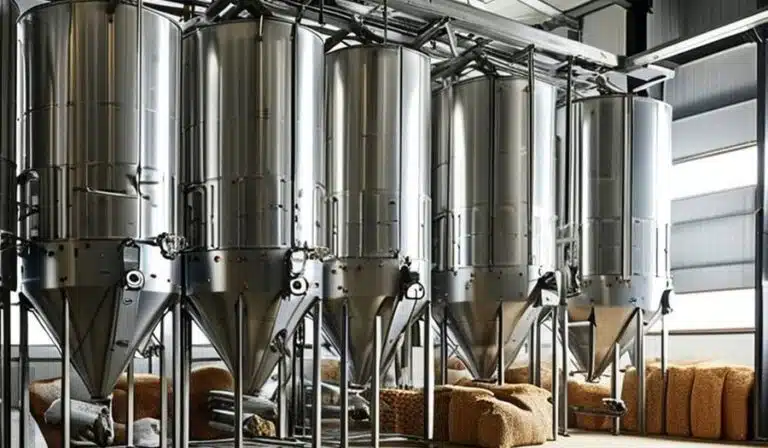
Operating environment and frequency of use
The working environment of the fermentation tank has an important impact on its life. For example, long-term exposure to high humidity, heat, or suppressed gas environment will accelerate the aging of stainless steel. At the same time, excessive frequent or excessive use of the fermentation tank will also cause fatigue damage to the equipment.
Cleaning and disinfection methods
The internal environment of the fermentation tank needs to be kept sterile, but improper cleaning methods may damage the equipment. For example, using excessive acidic or alkaline agents for cleaning may cause corrosion on the stainless steel surface instead of cleaning; thorough cleaning will cause serious residues, affect the fermentation quality, and even cause corrosion of the tank.
Key factors to maximize fermentation tank efficiency
Optimal tank design
Choosing a fermentatietank with features such as insulation walls, advanced cooling systems, and ergonomic design can not only improve fermentation efficiency but also optimize energy consumption and reduce long-term operating costs.
- Insulation wall: The efficient insulation layer can reduce the impact of ambient temperature on the internal temperature of the fermentation tank, ensure the stability of the fermentation process, reduce the risks caused by external temperature fluctuations, and reduce the energy consumption of the cooling system.
- Advanced cooling system: The use of multi-zone jacket cooling or coil cooling system can more accurately control the temperature, avoid local overcooling or overheating, improve the fermentation efficiency of yeast, and ultimately improve the quality of beer. Some intelligent cooling systems can also automatically adjust the temperature according to the fermentation stage to improve the level of automation.
- Ergonomic design: Optimize the tank structure and improve the convenience of operation, such as reasonable valve layout, ergonomic drain port, easy-to-clean inner wall design, etc., so that brewers can be more efficient and convenient in daily use and maintenance.
Advanced monitoring system
Modern fermenters are usually equipped with pH, temperature, pressure, and dissolved oxygen sensors. These systems can not only help brewers monitor the fermentation status in real-time but also optimize the fermentation process through automated control to ensure consistency and efficiency.
- Real-time data collection and adjustment: Through the intelligent monitoring system, brewers can view key data such as temperature, pH value, dissolved oxygen content, etc. at any time during the fermentation stage to ensure that environmental conditions are always in the best state.
- Remote control and alarm system: Some modern fermenters have integrated IoT technology, allowing remote monitoring of equipment status and automatically issuing alarms when temperature or pressure is abnormal, reducing the burden of manual inspection and improving management efficiency.
- Data storage and optimization: Advanced systems can also store historical data to help brewers analyze the differences between different batches and optimize fermentation parameters to improve long-term production stability.
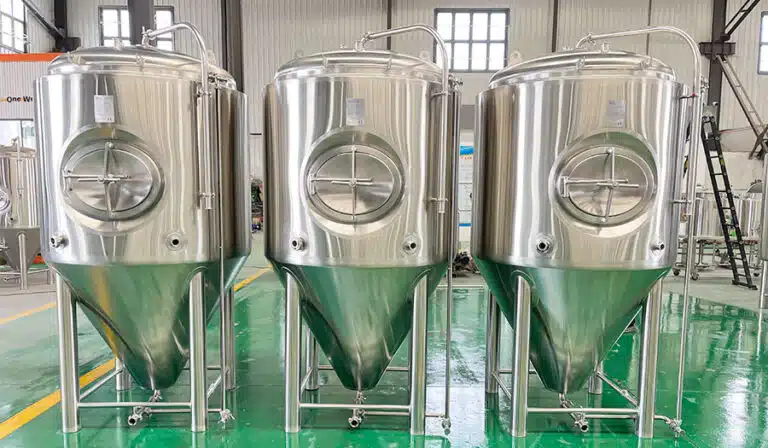
Beheer van gisten
Healthy yeast is the key to successful fermentation. A good yeast harvesting, storage, and delivery system can ensure the stability of beer flavor and improve fermentation efficiency.
- Yeast harvesting and reuse: Yeast usually settles to the bottom after fermentation. A reasonable yeast recovery system can effectively collect healthy yeast, keep it active during multiple uses, and reduce production costs.
- Storage condition optimization: The appropriate yeast storage temperature (generally 1-4°C) and the right amount of nutrient supplementation can maintain the activity of yeast, avoid decay, and ensure the success rate of the next fermentation.
- Precision delivery system: Modern fermentation tanks are usually equipped with automatic yeast delivery systems, which can accurately add yeast according to the set ratio, improve the consistency of fermentation, and reduce human errors.
Space utilization
For small breweries, space is an extremely valuable resource, so compact storage tanks or single-tank systems have become an important means to increase production.
- Vertical design improves space utilization: The use of fermentation tanks with a high diameter ratio can reduce the floor space and improve the fermentation efficiency per unit volume, which is an ideal choice for small breweries.
- Multifunctional integrated equipment: Some compact storage tanks can integrate multiple links such as wort fermentation, yeast sedimentation, and mature storage, reduce the number of equipment, improve space utilization, and simplify the production process.
- Modular expansion design: Some modern fermenters support modular expansion, which can add additional tanks according to production needs without taking up too much additional space, improving flexibility and return on investment.
Tips to extend the life of beer fermentation tanks
- Regular cleaning and disinfection: Regular cleaning and disinfection of fermentatietanks is the basis for extending their service life. Make sure to thoroughly clean the residue in the tank after each use to avoid the accumulation and corrosion of fermentation substances. Use appropriate cleaning agents and disinfectants, and avoid using too strong chemical cleaning agents to prevent damage to the tank.
- Control fermentation temperature: Temperature control of fermentation tanks is crucial to beer quality and equipment life. Too high or too low temperatures will increase equipment wear and even cause adverse reactions. Maintaining the appropriate fermentation temperature can reduce the impact of thermal expansion and contraction on the tank, thereby extending the life of the equipment.
- Avoid frequent physical shocks: Avoid frequent physical shocks or excessive vibrations on the fermentation tank, especially during loading and unloading. Any unnecessary shocks may cause cracks or damage to the tank, thereby shortening its service life.
- Regularly check the equipment: Regularly check the various components of the fermentation tank, especially the status of valves, seals, and pipes, to ensure that there are no leaks or damage. Timely maintenance can avoid larger failures, thereby avoiding high maintenance costs and downtime.
- Avoid excessive pressure: Control the pressure during fermentation to avoid excessive pressure on the tank. Excessive pressure may not only cause damage to the fermenter but also affect the quality of the beer. Make sure the pressure of the fermenter is within a safe range and avoid overloading.
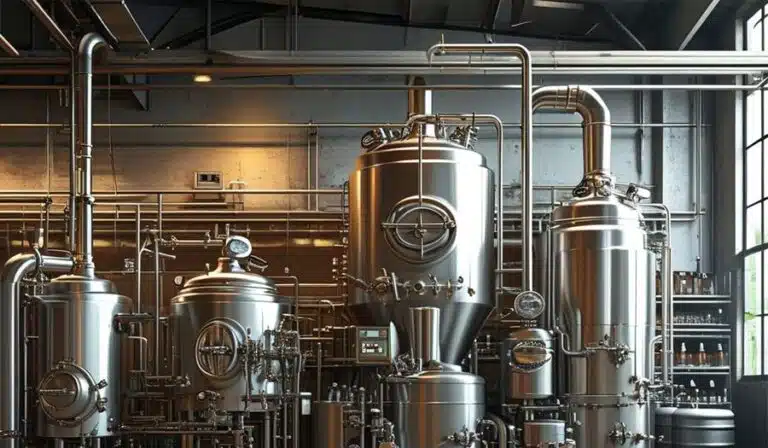
FAQ
How to clean beer fermentation tanks?
In order to extend the life of beer fermentation tanks, regular cleaning is key. After each use, the fermentation tank should be thoroughly cleaned to remove residual fermentation materials. Use mild detergents and disinfectants, and avoid strong chemicals to prevent corrosion and damage to the tank. You can consider using an automated cleaning system to improve cleaning efficiency.
What is the optimal cleaning frequency of the fermentation tank?
It is recommended to clean thoroughly after each fermentation cycle. If the fermentation tank is used for continuous production, it can be deep cleaned every few days or once a week to ensure that there is no residue inside the fermentation tank. Check the cleaning effect regularly to avoid bacterial growth or yeast contamination.
How to control the temperature of the fermentation tank?
The temperature of the fermentation tank should be kept within the optimal range required for beer fermentation. Generally, the fermentation temperature of beer is between 18-22 degrees Celsius. Use temperature control equipment to monitor and adjust the temperature to avoid excessively high or low-temperature fluctuations, which helps reduce wear and tear on the equipment and maintain the fermentation effect.
How to avoid physical shock to the fermentation tank?
Ensure that the fermentation tank avoids severe vibration during transportation and installation. Especially during cleaning and transfer, try to avoid the tank from being hit or dropped. Protect the equipment appropriately and ensure that operators understand the correct handling method.
How to detect whether the fermenter is leaking or damaged?
Regularly check the tightness of the fermenter, especially whether there are signs of air or liquid leakage at the valves and connection points. If any leaks or damage are found, repair or replace the parts immediately. Using methods such as air pressure testing or liquid testing can effectively detect potential problems.
How to avoid excessive pressure on the fermenter?
Keep the internal pressure of the fermenter within a safe range and avoid over-pressurization. Use a pressure gauge to monitor the pressure in the tank in real-time to ensure that it does not exceed the safety upper limit during production. If necessary, install a safety valve to automatically release excessive pressure to prevent equipment damage.

